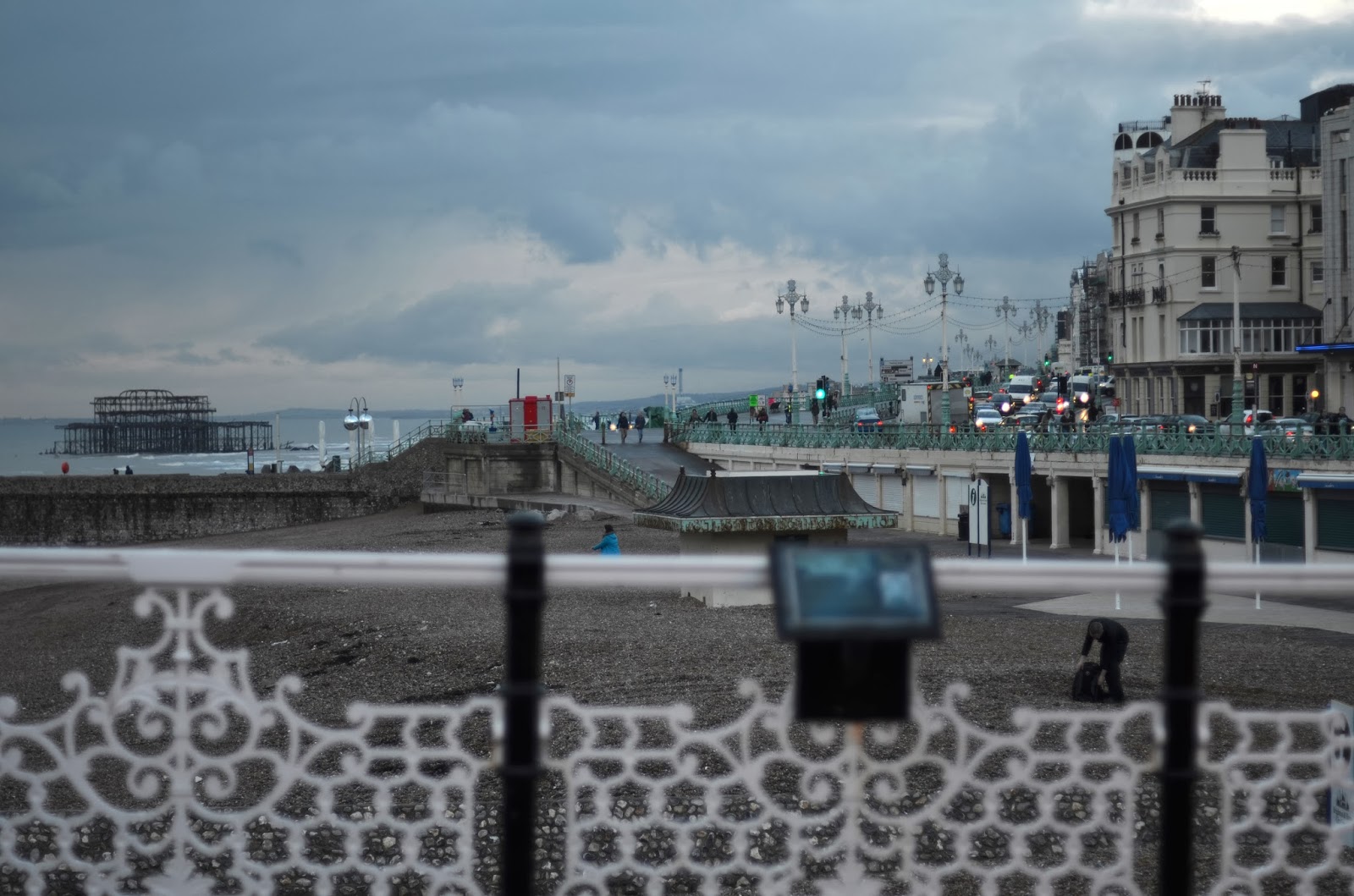On Tuesday I went to the Brighton Museum & Art Gallery! It's centrally located in the Royal Pavilion gardens. The exhibition at the moment is Subversive Design however I did not go to the paid section (there was still quite a bit of design stuff on display in the free areas). I liked these chair designs.
Good-looking, useful objects.
Part of the museum was devoted to the history of Brighton. I thought this photo of the slums was pretty amazing.
Some good posters and groovy type. Again, in a section of the museum about some of Brighton's characteristics, this was part of the theatre/entertainment bit.
Performance!
A fancy marionette.
There was a fashion section.
I'm guessing they've placed a Fatboy Slim shirt here because of the historic, massive open-air concerts he did at Brighton Beach. Not my photo below - but holy hell! Funnily similar to what the beach in Rio de Janeiro looked like when the Pope visited.
There is a wonderful section of the museum devoted to female artists. It is really, really, really refreshing to see. I'm just tired of endless museum walls lined with Jackson Pollock, Pablo Picasso, Henri Matisse, Gerhardt Richter, etc etc etc etc etc. I'd be happy to never see any of those again.
Below are a couple photos of some stunning wood engravings by an artist named Gertrude Hermes.
Autumn Fruits, 1935
Undercurrents, 1939
In handwriting around the bottom-left of the circle says: All that remained to be seen were bubbles rising and oil spreading over the surface of the sea.
Snowdrops, 1936.
Below is a watercolour by Rhoda Florence Waley. Mending Wires, 1916. A nice painting. Since being here, I've noticed that the clusters of power lines extending from a points on poles make some good burst-y shapes.
A Corner of the Lanes by Dorothy Watts, early 20th century. The area in this painting is recognizable to me - another sign that Brighton is beginning to feel home-y.
In a lot of early depictions of Brighton, the streets and the architecture look pretty fresh. Less worn. Not so many cracks in the tiles, chips in the paint, or plant life sprouting up from every little crevice. While areas of Brighton that were once slums are now quite lovely, much of the once-pristine architecture is a little more threadbare nowadays, a little seedier - but I'm intrigued by it. This is the case in most places; grand, old churches - such as St. Paul's Cathedral in London - clash with modernity resulting in a dirty-looking exterior from air pollution while cranes lifting high-rise complexes from the ground loom in the background.

When I first started traveling, I noticed this and I remember it made me feel a little miserable. I think being placed within a tarnished modernity kind of suddenly transported me to a sad-looking future that was a far cry from the relatively untouched Newfoundland that I always knew. This has changed now, though. One of my favorite things about Brighton is that we're all living our regular day-to-day lives around these beautiful Victorian structures. Fancy moldings, cast iron fences and gates topped with ornate decorations. Everything is made of some form of metal, stone or glass. No plastic. There are clusters of about seven different kinds of shrubs in the front yard; a lot of people seem to keep their own mini-jungle as opposed to a big, boring, green lawn (not that there is space for that). Brighton is known for being a party town and this is evident in the cans and bottles strewn around everyone's doorstep and plastic bags of recyclables hung on those iron fences.

Structurally, the endless rows of these houses are very similar but each and every one looks totally unique. They're remixes of each other which results in a really pleasing overall aesthetic. It's this grand, old, historic facade combined with time that I enjoy. Time being that thin layer of green that seems to coat all the staircases and the grey that runs below the windows, painting the brightly-colored walls a tone dingier. There are cracks in the stone and the metal is rusting. The sidewalks aren't as much flat as they are rippled from tree roots bulging upwards. Old architecture and infrastructure sitting, cracking and peeling amidst a new, rapid, bustling world - though I should add that this new world isn't ignoring the old; there's a respectful relationship and people seem to put a lot of effort into maintaining these properties.
I wonder how artistic depictions of Brighton as it appears today will differ from the reality of the place in another 100 years.
Anyhow, continuing through the museum.
I really like the moments in which I am a woman looking at a painting of women, by women. It is a fairly uncommon experience (unless you're actively seeking it) and it should happen more. The painting below is by Constance Rea. Ladies of Quality, 1910-12.
Another section of the museum I really enjoyed was
Mr. Willett's Popular Pottery. Henry Willett was one of the founders of the Brighton Museum. The didactic read "Willett was convinced that ceramic figures and vessels could tell stories from political, social and cultural history through the images with which they were decorated. The present display respects his intention that the pieces be grouped under the twenty-three subject headings listed in his catalogue of 1899." There were a whole bunch of ceramics displayed in the vitrines pictured below (there were more on the other side, too).
They were grouped in different sections, each one with a specific theme (science, religion, industry, etc).
"With certain and delib'rate fkill
The fair one fends her dart;
But with a keener weapon ftill,
She wounds her Strephon's heart.
A potato cup
Before I left, I had a scone and a flat white from their lovely cafe. It was overall very enjoyable!

















































